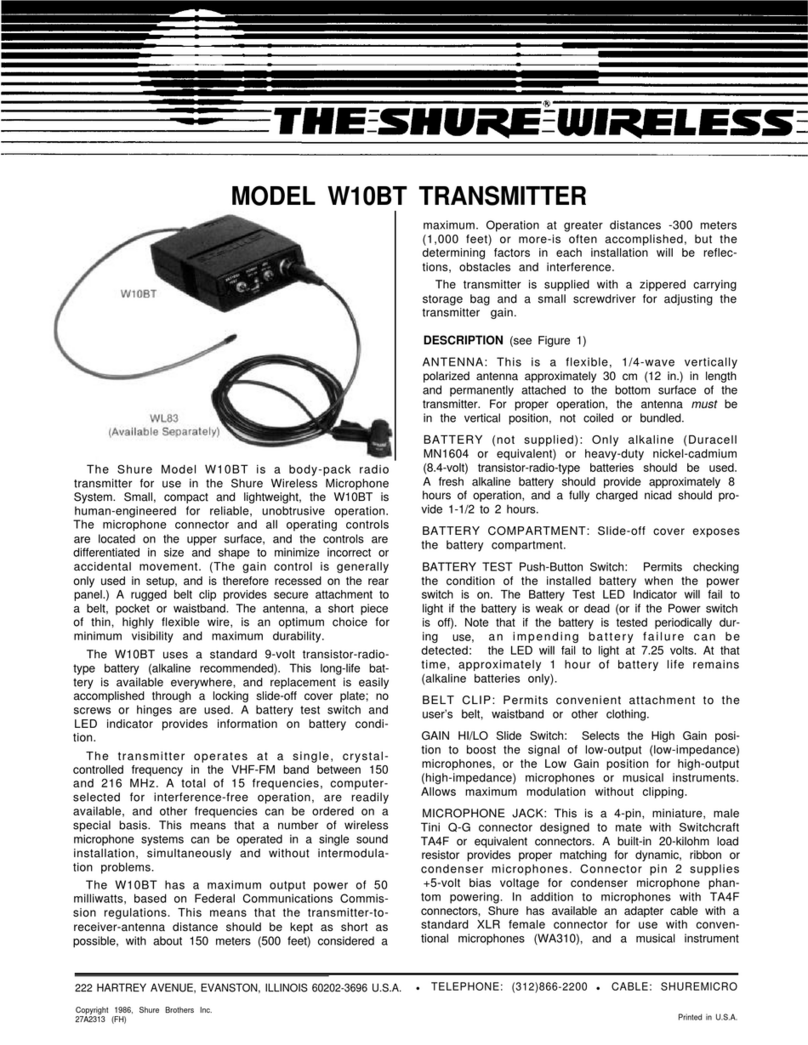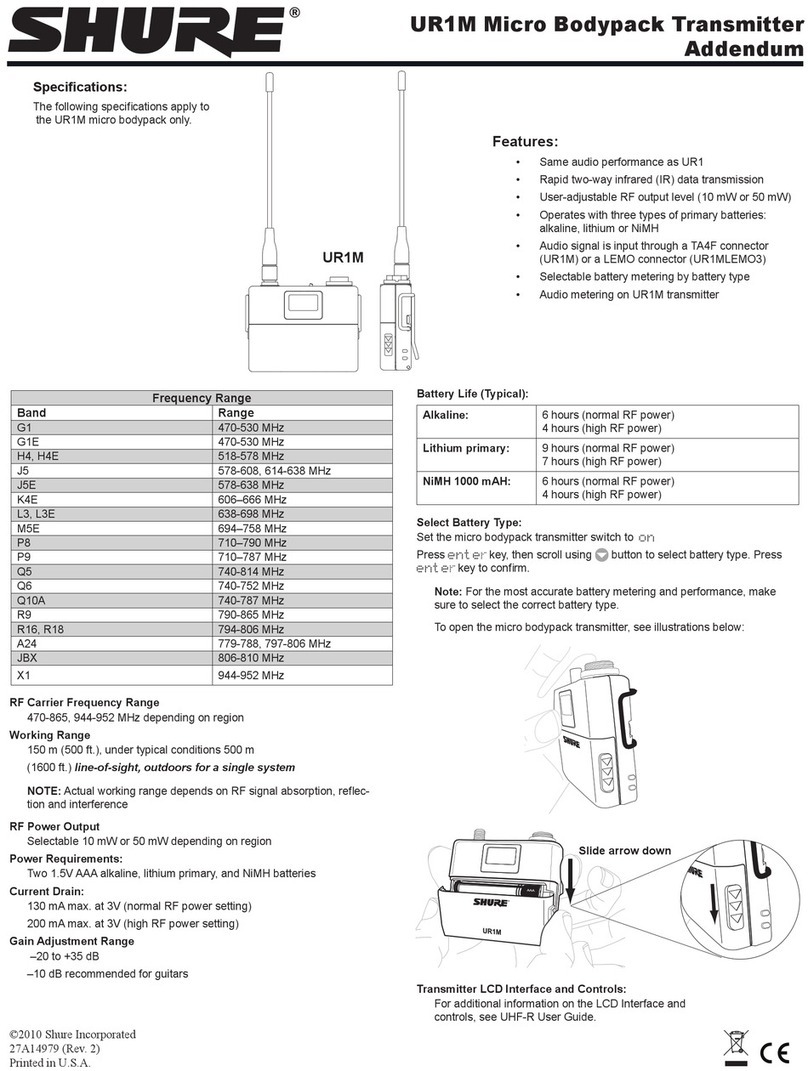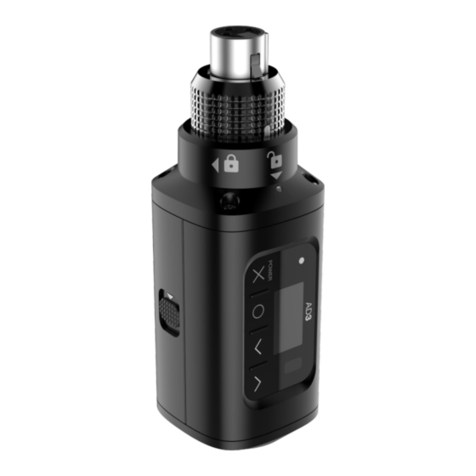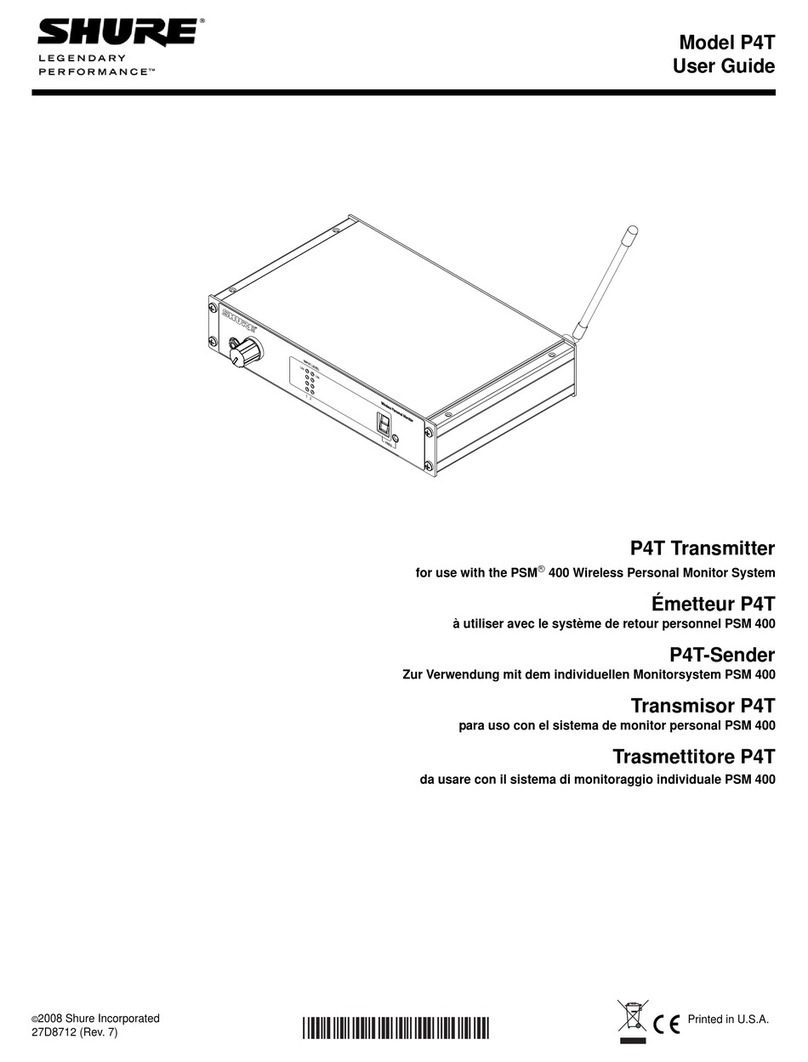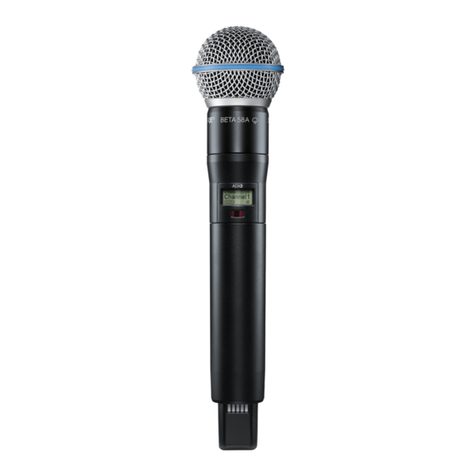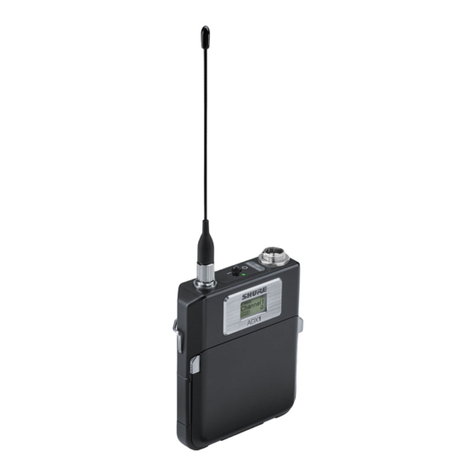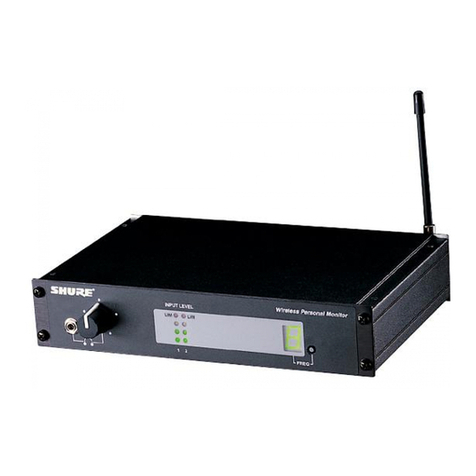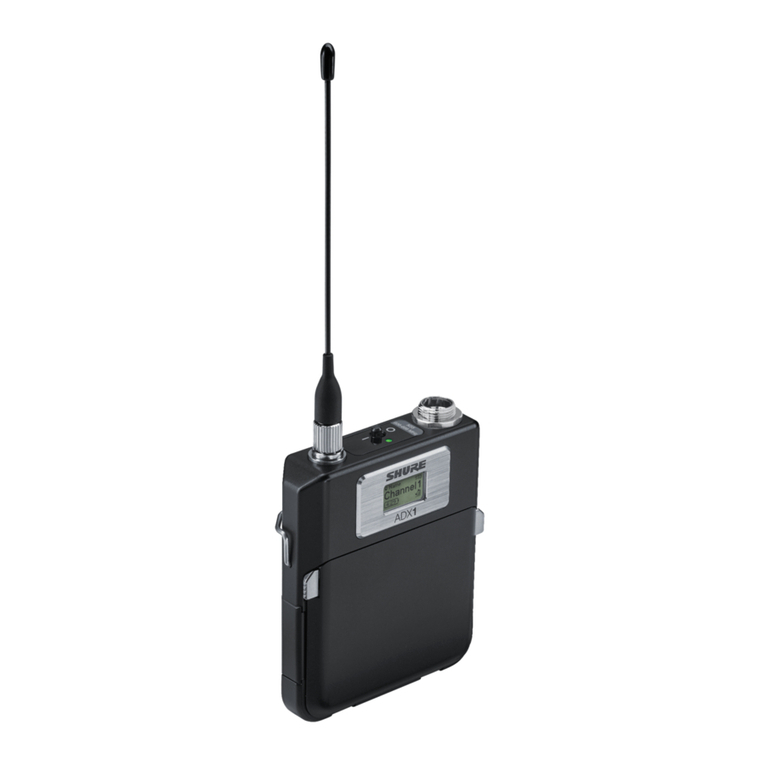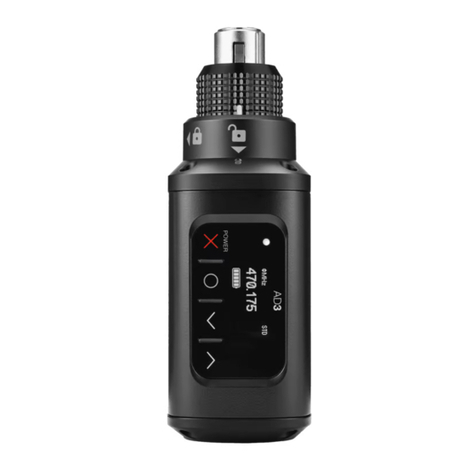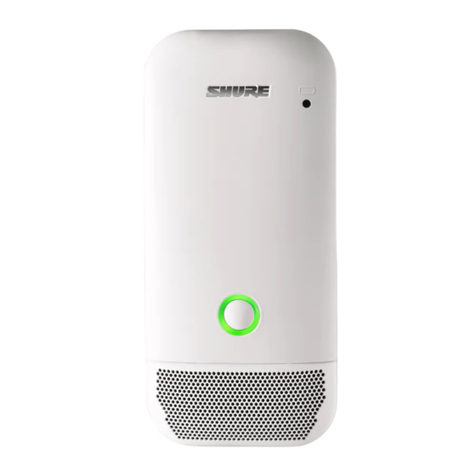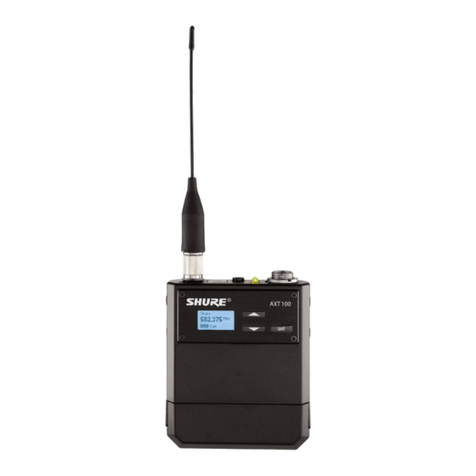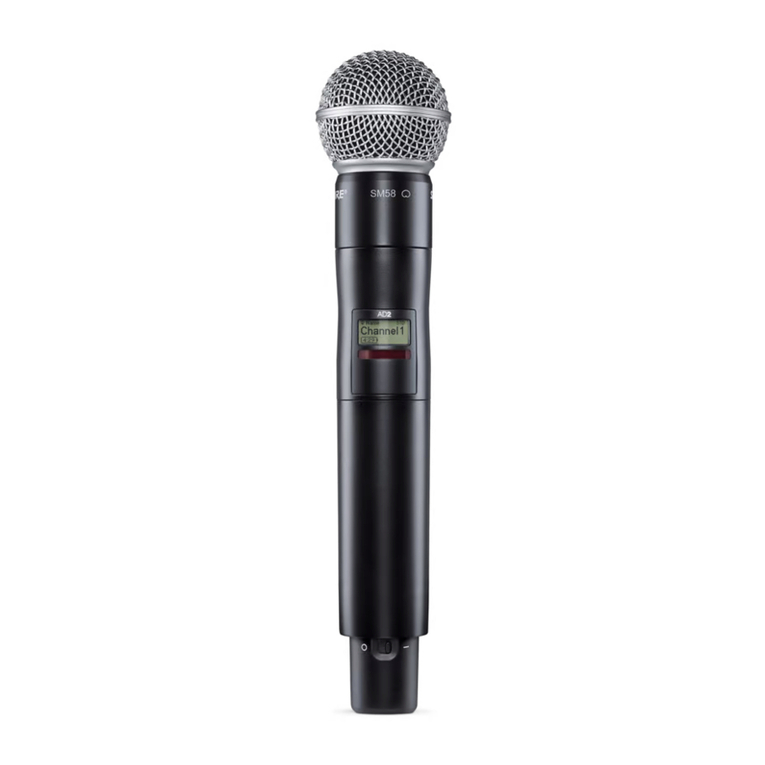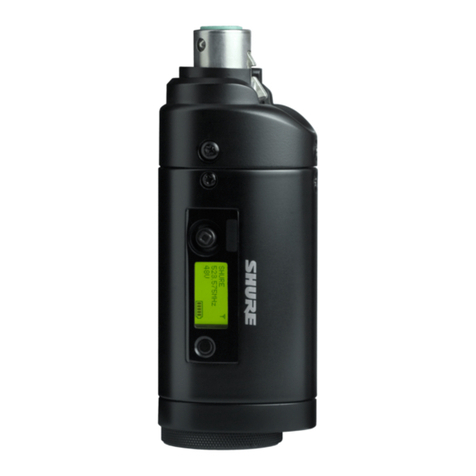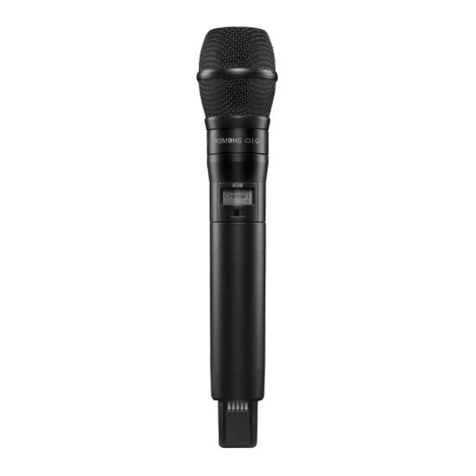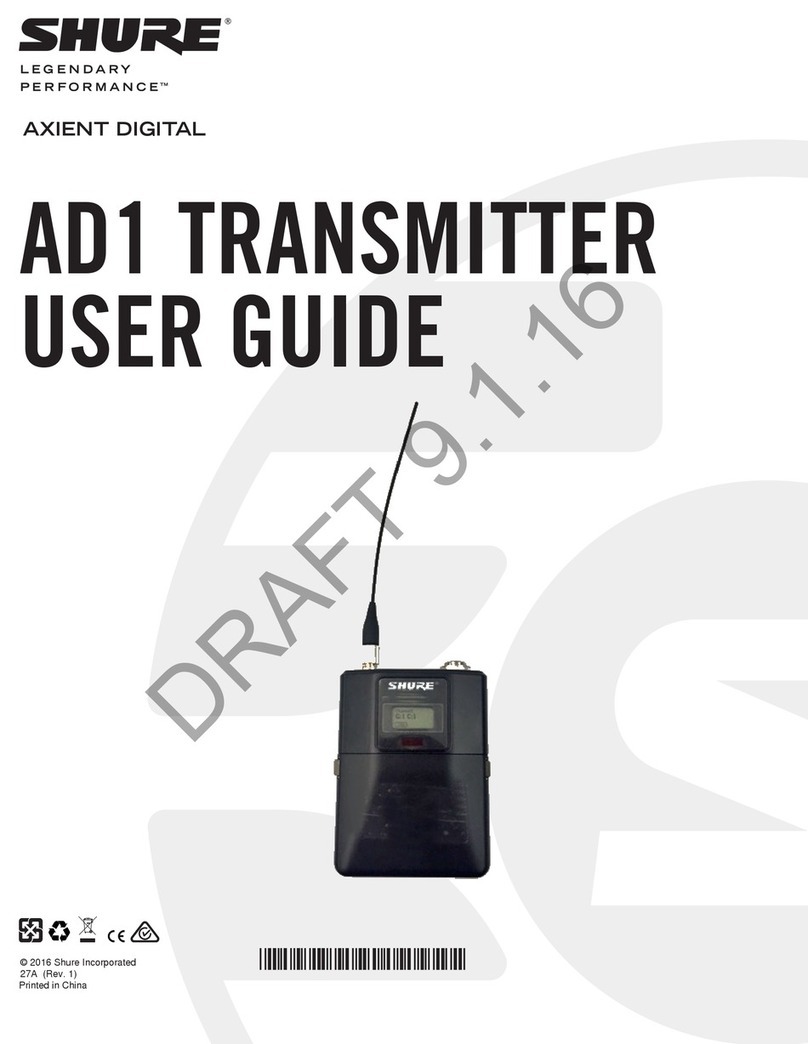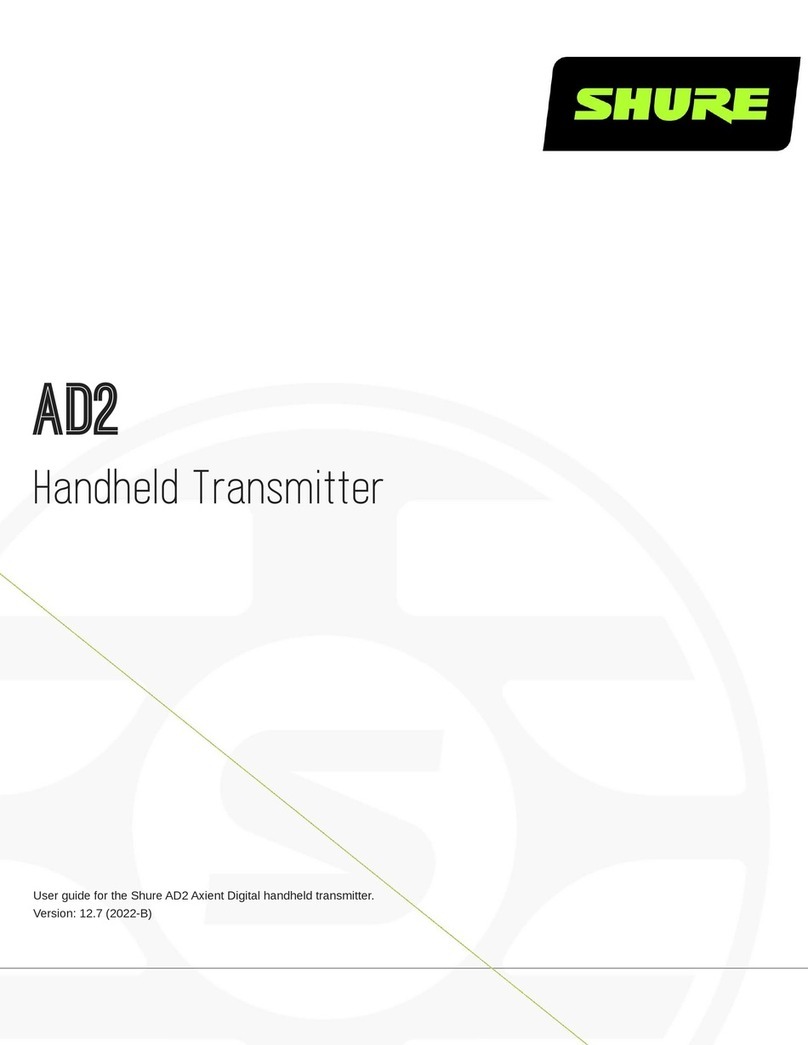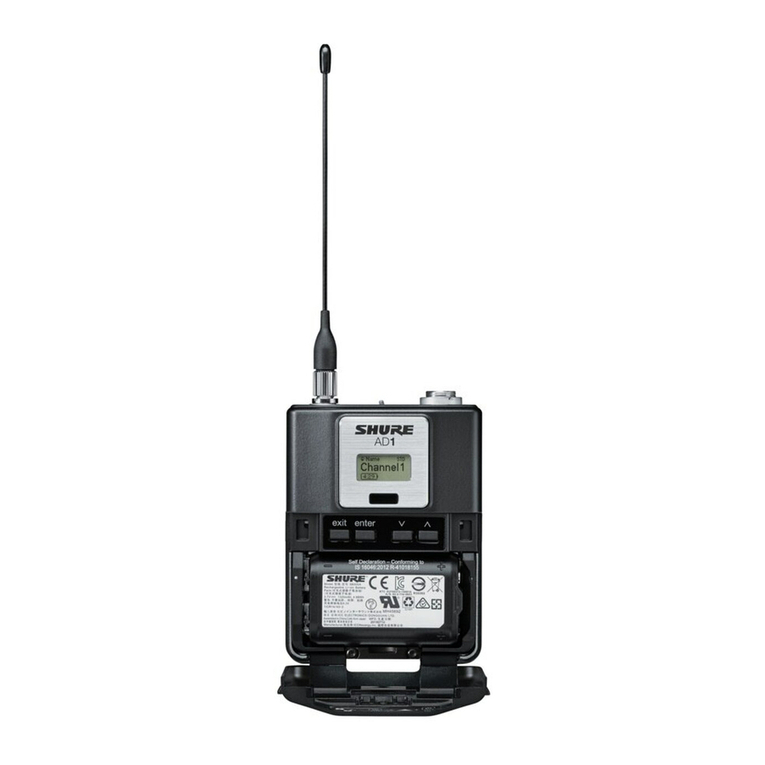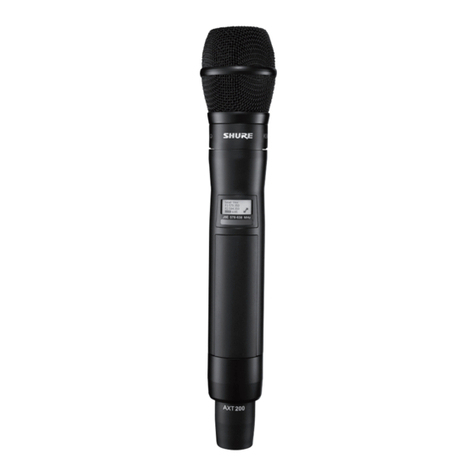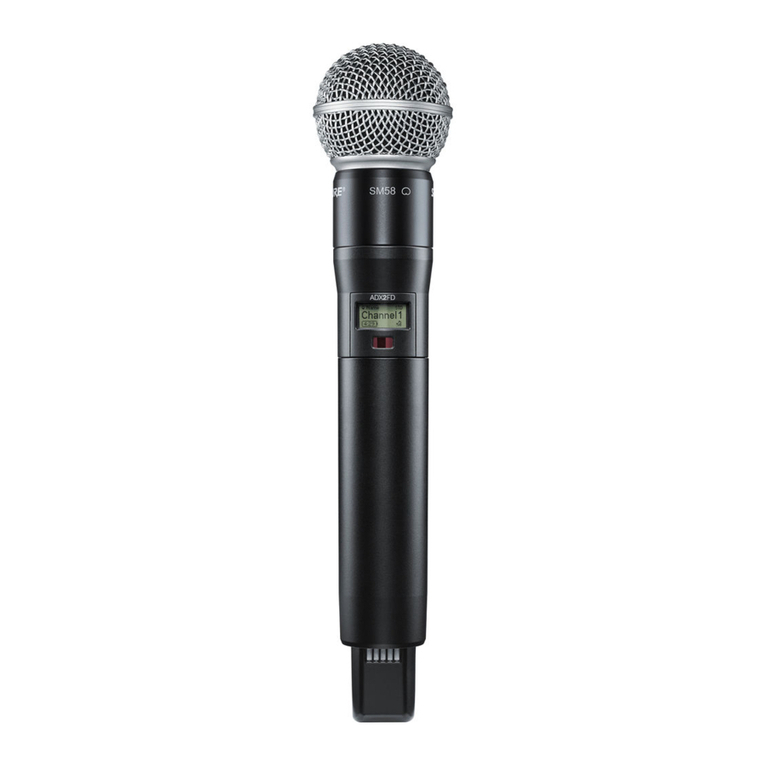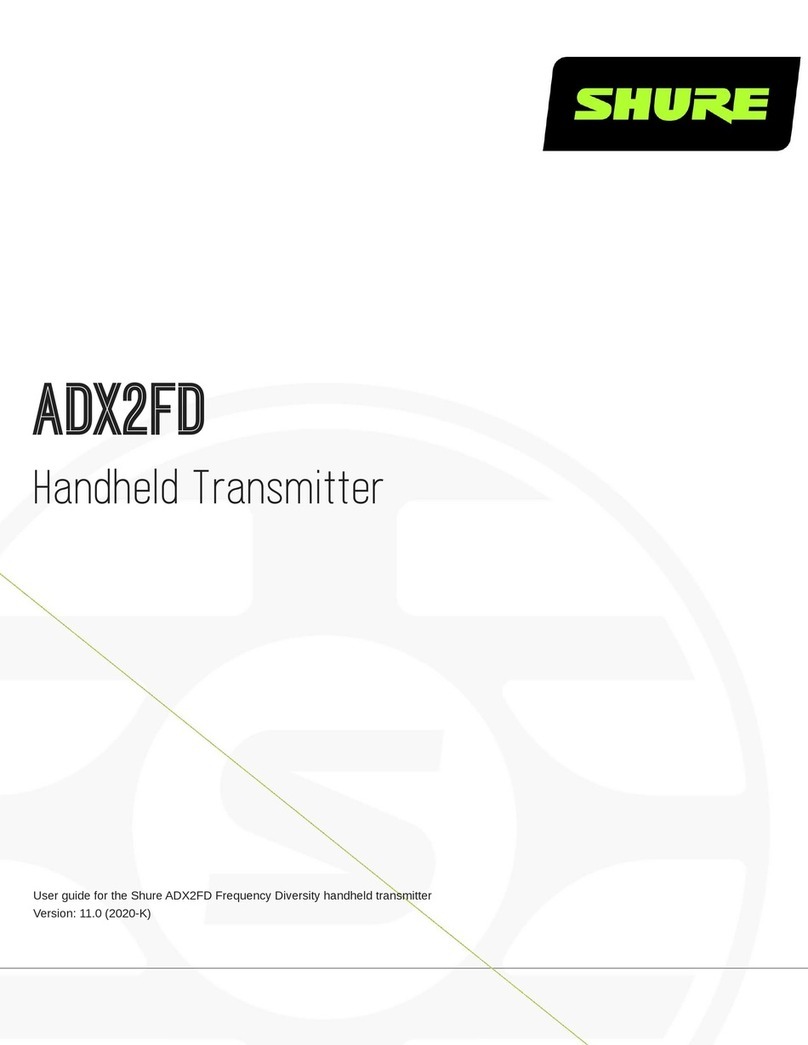
Shure Incorporated
3/23
•
•
•
•
•
•
•
•
•
•
•
•
•
•
•
•
•
•
•
•
•
•
ADX1M
Bodypack Transmitter
WARNING
Battery packs may explode or release toxic materials. Risk of fire or burns. Do not open, crush, modify, disassemble, heat
above 140°F (60°C), or incinerate.
Follow instructions from manufacturer
Only use Shure charger to recharge Shure rechargeable batteries
WARNING: Danger of explosion if battery incorrectly replaced. Replace only with same or equivalent type.
Never put batteries in mouth. If swallowed, contact your physician or local poison control center
Do not short circuit; may cause burns or catch fire
Do not charge or use battery packs other than Shure rechargeable batteries
Dispose of battery packs properly. Check with local vendor for proper disposal of used battery packs.
Batteries (battery pack or batteries installed) shall not be exposed to excessive heat such as sunshine, fire or the like
Do not immerse the battery in liquid such as water, beverages, or other fluids.
Do not attach or insert battery with polarity reversed.
Keep away from small children.
Do not use abnormal batteries.
Pack the battery securely for transport.
Note: Use only with the included power supply or a Shure-approved equivalent.
Please follow your regional recycling scheme for batteries, packaging, and electronic waste.
ADX1M Axient Digital Micro Bodypack Transmitter
ADX series transmitters deliver impeccable audio quality and RF performance, and are equipped with ShowLink remote con
trol for real-time parameter adjustments and interference avoidance. This transmitter features wideband tuning, High Density
(HD) mode, encryption, and advanced rechargeability. The contoured form factor and lightweight PEI plastic construction offer
both comfort and heat resistance. The membrane switches and LEMO connector protect against moisture, while the OLED dis
play provides excellent visibility in low-light environments.
Features
Performance
20 Hz to 20 kHz range with flat frequency response
Automatic input staging optimizes gain setting
Internal adaptive antenna optimizes signal when ADX1M is worn against the body
Diversity ShowLink-enabled for remote transmitter control and automatic interference avoidance
AES 256-bit encryption-enabled for secure transmission
>120 dB, A-weighted, System Gain @ +10
Digital output: >125dB, A-weighted (Dante, AES3, AES67)
100 meter (300 feet) line-of-sight operating range
®
